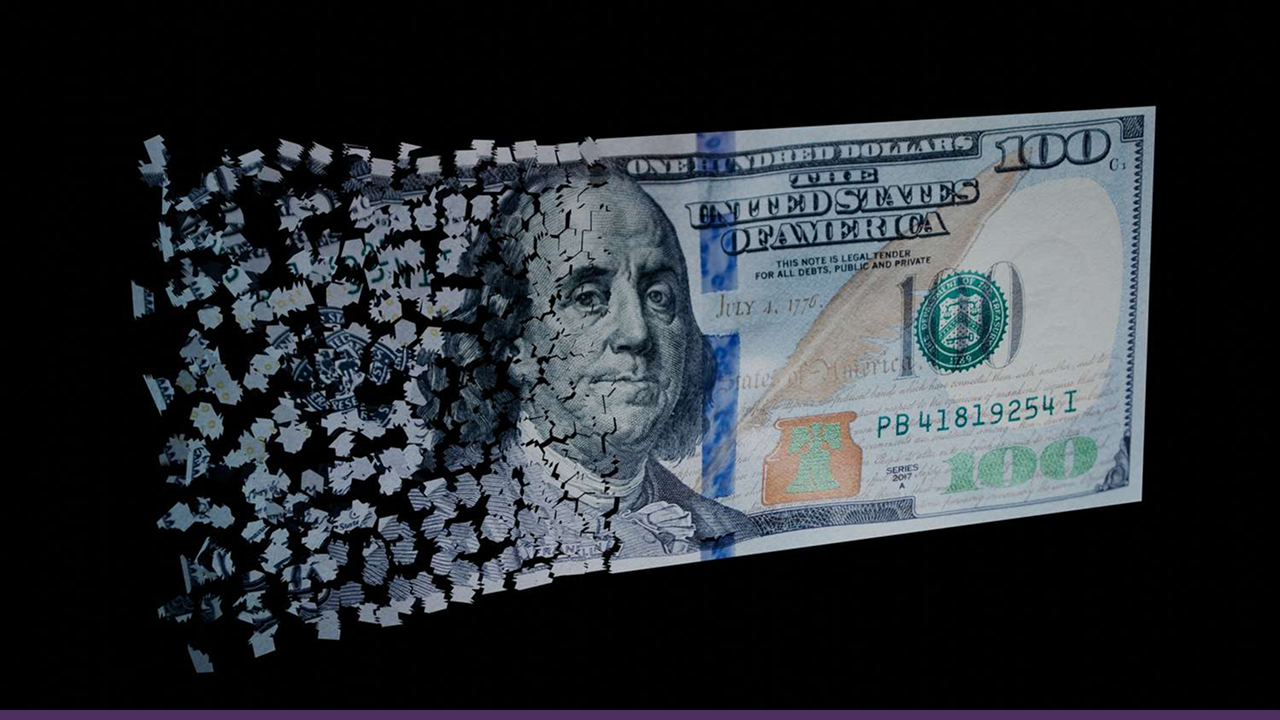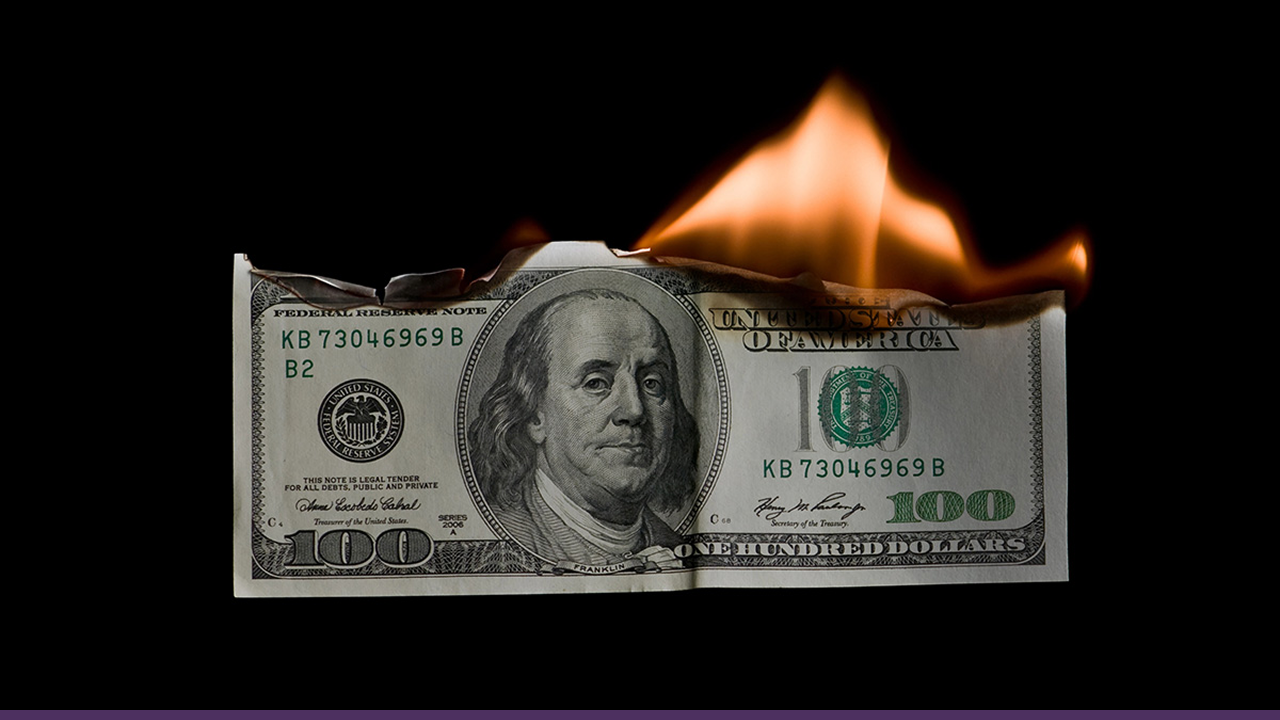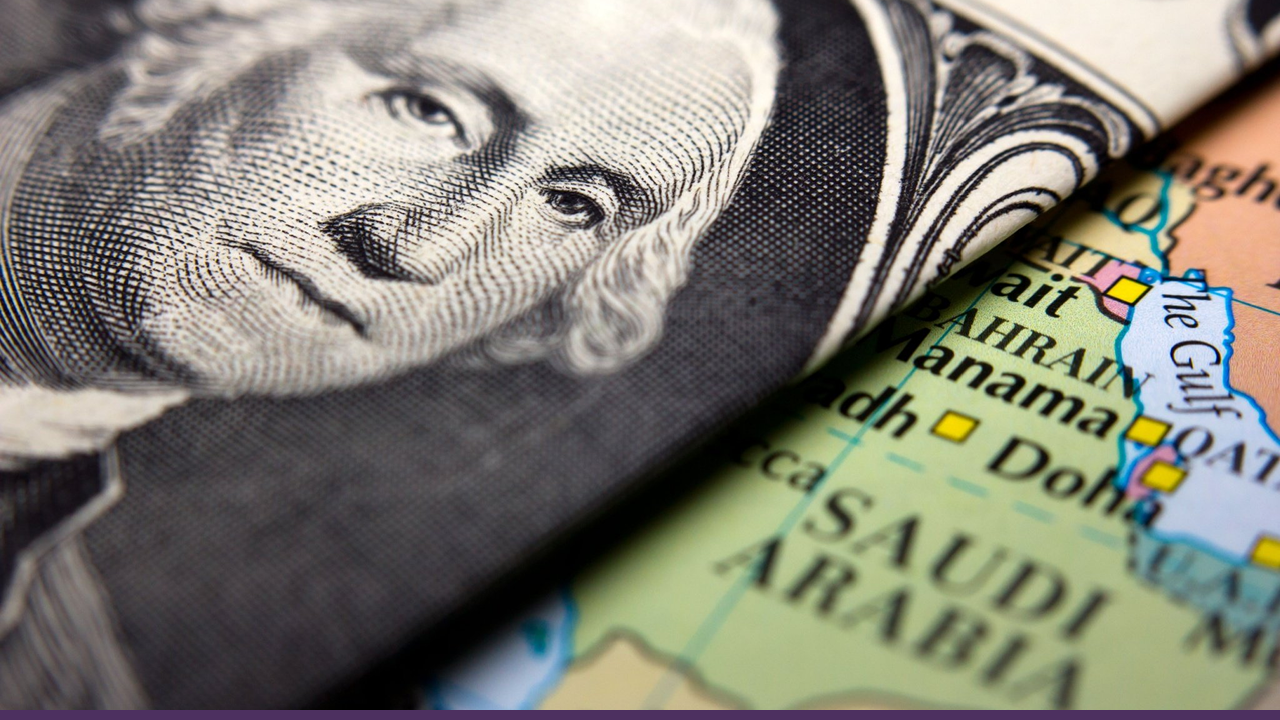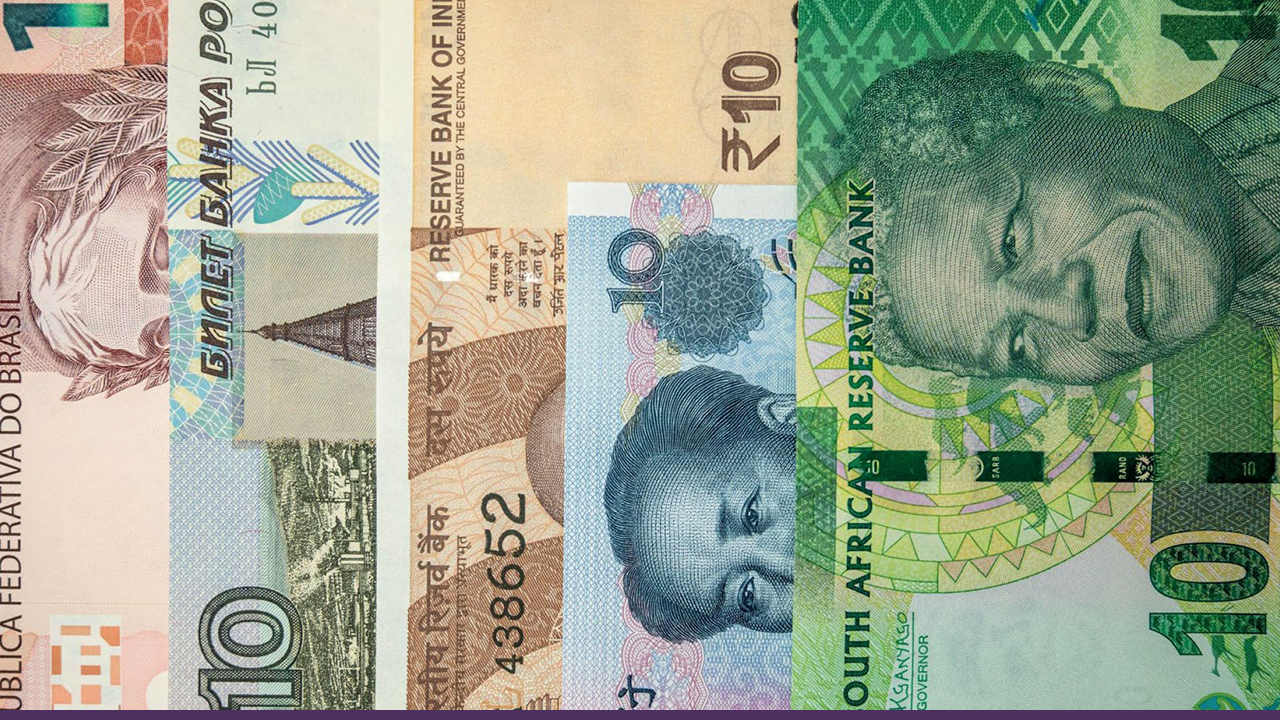18 Sept 2025
11 MIN READ
What Is De-Dollarization and Is It Really Happening in 2025?
Summary
For nearly eight decades, the US dollar has reigned as the undisputed king of global finance. It’s been called “the Almighty Dollar” for a reason. But in 2025, cracks are starting to show in its throne. From trade alliances bypassing the greenback to nations hoarding gold and experimenting with digital currencies, a quiet rebellion is underway. The question is no longer “if” the dollar’s dominance will be challenged, but how fast, and what will rise to replace it.

The increase in renminbi reserves accounts for around a quarter of the decline in the dollar’s allocation. Credits: Manuel xxxxx/Getty Images
What Is De-Dollarization?
De-dollarization refers to the gradual decline of the US dollar's dominance in global trade and finance. Although there’s no doubt that it remains at the top, the dollar’s share of allocated currency reserves has declined over the past few decades.
According to the most recent data available from the International Monetary Fund, the USD accounted for 57% of allocated currency reserves as of the third quarter of 2024, well ahead of the euro at 20% and the Japanese yen at almost 6%.
The shift away from the dollar isn’t happening overnight, but the signs are hard to ignore. Major economies are exploring trade in their own currencies or alternatives. Regional trade blocs are experimenting with cross-border payment systems that bypass the dollar entirely, while some countries are accelerating their diversification of reserves. These moves hint at a slow but steady erosion of the dollar’s once-unquestioned supremacy.
Historical background
The dollar was first printed in 1914, a year after the establishment of the Federal Reserve, which became the U.S. central bank with the passing of the Federal Reserve Act. The US dollar's global dominance started after World War II. The Bretton Woods Agreement in 1944 established the dollar as the primary international currency, backed by gold.

In previous petrodollar booms, energy producers have recycled their windfalls into the Western financial system. Credits: Reuters
In the 1970s, the US struck deals with major oil producers, especially Saudi Arabia. They agreed to price oil only in dollars. In return, the US offered military and economic support. This deal created a steady demand for the dollar. Countries needed the US dollar to buy oil, which boosted its role in trade and as a reserve currency. When the US dropped the gold standard in 1971, the dollar became even more powerful through the petrodollar system.
The Office of the Comptroller of the Currency and the National Currency Bureau were established in 1863 to manage new banknotes. Centralized printing was subsequently transferred to the Bureau of Engraving and Printing in 1869. The U.S. Treasury began issuing legal tender in 1890, over a decade before the Federal Reserve was established.
Why Are Countries Dropping the US Dollar in Trade and Reserves?
While the shift away from the dollar has been underway before Trump’s second presidency, it has further fueled the desire. His second term focuses primarily on tariffs and isolationist policies. This shift has strained US alliances and prompted other powers to reassess their positions.
Countries such as China, India, and Brazil are now exploring alternatives to the US dollar for trade. This shift, along with rising inflation, weakens the dollar's global standing. Inflation diminishes the value of US debt, raising worries about the dollar's long-term stability as a reserve currency.

US President Trump has repeatedly said that BRICS nations must maintain the US dollar’s role in global trade or face economic consequences. Credits: Sentinel Digital Desk
As inflation persists, global investors are questioning the safety of the dollar for savings and investments. In response, countries are starting to trade directly in their own currencies, which could reduce the dollar's dominance and lead to a multipolar financial system. This type of change would enable emerging economies and decrease US influence over global financial markets and institutions.
Are 71 countries really de-dollarizing?
As of mid-2025, over 70 countries have initiated steps to reduce their reliance on the U.S. dollar in international trade and finance. This trend is particularly prominent among BRICS nations and has expanded to include countries like Argentina, Iran, and Saudi Arabia. These nations are increasingly settling transactions in local currencies or alternatives, such as the Chinese yuan, in an effort to enhance economic sovereignty and mitigate exposure to U.S. monetary policies. For instance, the Pan-African Payments and Settlements System enables direct currency exchanges between African nations, significantly reducing transaction costs.

The potential creation of a new currency by the BRICS nations could have positive implications for their economies. Credits: Triomarkets
Saudi Arabia Ditches US Dollar - Fact or Fiction?
Saudi Arabia has not given up the US dollar for oil sales, despite speculation. Riyadh is open to using other currencies, like the Chinese yuan, in limited trade. However, most oil is still priced and sold in dollars.
There has yet to be a plan to end the "petrodollar pact, contrary to popular belief. Saudi Arabia is carefully diversifying its financial ties and expanding options. It is participating in projects such as BRICS discussions and digital currency trials. Saudi Arabia still holds over $140B in US Treasuries, demonstrating its reliance on dollar-denominated assets.
Saudi Arabia is taking a flexible shift to weigh out more options, but not a complete break from the dollar. While part of a global trend to reduce dollar use, claims of a total Saudi exit from the US dollar are overstated. The petrodollar system is still intact for now.
How De-Dollarization Affects Global Trade and Settlements
De-dollarization is changing global trade. Countries are entering into bilateral agreements that use local currencies instead of the US dollar. For instance, China and Russia now settle trade in yuan and rubles. Nations in Africa and Asia are also using the Indian rupee.
Moreover, digital currencies like China's digital yuan and Central Bank Digital Currencies provide faster, dollar-free transaction options. These trends are slowly decreasing the dollar's dominance. The yuan and rupee are gaining ground in international trade, transforming global financial settlements.

Russia called for de-dollarization at the 15th BRICS Summit in 2023, and the move gained momentum at the June 2024 BRICS foreign ministers’ meeting. Credits: Shutterstock
The Role of Commodities in the De-Dollarization Push
Commodities are now a key focus in the global move away from the dollar. Many countries want to reduce their reliance on the US dollar. The trading of oil, gas, and gold plays a significant role in this shift.
Oil, gas, and gold priced in non-USD terms
Major energy exporters, such as Russia and Iran, now accept local currencies or other payment methods for their oil and gas transactions. This means they can avoid using the dollar. Gold is also being used more for trade settlements, especially among countries facing US sanctions.
BRICS gold-backed currency plans
The BRICS nations are exploring the possibility of establishing a gold-backed currency. This currency could compete with the US dollar in global trade. If they succeed, it might encourage trade based on commodities outside the dollar system.
Sanctioned countries creating new payment systems
Countries under Western sanctions, such as Russia, Iran, and Venezuela, are quickly creating alternative payment systems. They are developing digital currencies, direct barter deals, and alternatives to SWIFT, like Russia’s SPFS and China’s CIPS. These systems will enable them to trade oil, gas, and other commodities without relying on the USD.
Is the US Economy at Risk from De-Dollarization?
A gradual decline in global demand for US dollars could pose a long-term challenge to the American economy. If fewer countries keep dollars as reserves or use them for trade, the US may face higher borrowing costs. This is because foreign demand for Treasury bonds would decrease. It could also lead to inflation since the US relies on importing goods at lower prices, which a strong dollar supports.
In response, US policymakers are exploring options such as a digital dollar and adjusting interest rates to maintain global confidence. The Federal Reserve is cautious but is closely monitoring developments. Treasury officials emphasize the importance of maintaining financial openness and flexibility in the application of sanctions.
Still, fears about an immediate collapse of dollar dominance may be exaggerated. The dollar remains central to global finance due to America’s strong capital markets, military presence, and legal stability, which offer advantages that its rivals, such as China, have yet to match.

BRICS is not characterized by collective decision-making or the practice of overtly endorsing or censuring each other’s foreign policies. Credits: CIRSD
Is Global De-Dollarization a Real Movement or Just Rhetoric?
Many headlines pump up the talk about a global “exodus” from the US dollar, but the reality is more multifaceted. Countries like China, Russia, and Brazil promote the use of local currencies for trade, but these efforts are often limited. Central banks still hold the US dollar as the most significant part of global reserves, about 58% as of 2024, according to the IMF. This share has been declining over the last twenty years.
Economists say that true de-dollarization requires more significant changes for it to pose a greater threat. It requires robust capital markets, stable currencies, and geopolitical stability. Most countries seeking alternatives, such as BRICS members, still rely on the dollar for key imports, including energy and high-tech goods.
In brief, de-dollarization is underway, but it is a slow process and unlikely to occur in the short term. Many of the actions towards them are more symbolic or politically motivated. The discussion is real, but the movement is gradual, not revolutionary.
What Does De-Dollarization Mean for the Future of the US Dollar?
De-dollarization shows a move toward a multipolar currency system. Several other major currencies, such as the euro and the yuan, as well as a possible BRICS-backed asset, will gain significant importance. This change could lessen the dollar’s control over global trade and finance.
CBDCs are speeding up this shift. Countries like China and India are launching digital currencies to support non-dollar trade. Meanwhile, private digital assets and stablecoins offer payment options that bypass traditional US systems.
However, the dollar remains strong in global markets. It has solid trust and liquidity. While it may not be replaced soon, its dominance might shift to a more balanced system. The dollar will stay important, but it won’t be the only primary currency.

De-dollarization brings both risks and opportunities, requiring businesses, investors, and policymakers to adapt to shifting global trade and finance. Credits: AndryDj/Shutterstock
Conclusion: Is De-Dollarization a Temporary Trend or Global Reset?
Headlines alert the world to a global shift away from the US dollar. The real question is whether this is a long-term decline in dollar dominance or just a short-term reaction to rising geopolitical tensions. Countries like China and Russia are seeking alternatives, and some central banks are diversifying their reserves. Still, the US dollar has unmatched liquidity, trust, and global infrastructure.
Looking to 2025 and beyond, there are key indicators to observe. These include the growth of BRICS currency initiatives, changes in global reserve holdings, and the dollar's role in energy and commodity markets. Sanction-driven diversification may continue, but a full reset would need significant changes. Most alternative currencies aren't ready for that.
People Also Ask
What is de-dollarization in simple terms?
De-dollarization refers to a significant reduction in the use of the dollar in global trade and financial transactions.
Why are countries dropping the US dollar now?
There are several reasons. The main ones are the emergence of digital currencies, economic sanctions, and the diversification of foreign reserves.
Is the claim about 71 countries true?
No, many countries are reconsidering the US dollar, but only a handful have dropped it altogether.
Has Saudi Arabia fully ditched the dollar?
No, it still holds over $140 B in US treasuries.
How does de-dollarization affect me?
It depends on which country you are from. But for most people, it does not affect them immediately.
